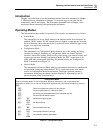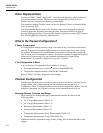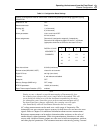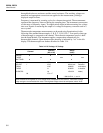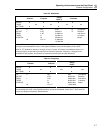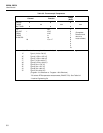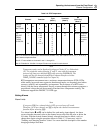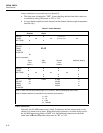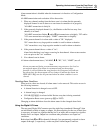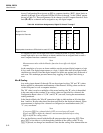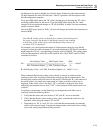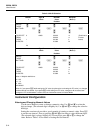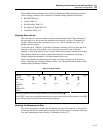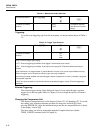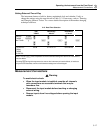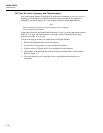
Operating the Instrument from the Front Panel
Channel Configuration
3
3-11
Alarm annunciation is disabled when the instrument is in Inactive or Configuration
Mode.
ALARM annunciation and evaluation follow these rules:
1. When any channel reading from the latest scan is in alarm (but the presently
displayed channel is not in alarm or a scan interval countdown is in progress):
"ALARM" annunciator is dimly lit.
2. If the presently displayed channel (i.e., the Monitor or the Review array Last
channel) is in alarm:
"ALARM" annunciator flashes. S and/or T limit annunciator on brightly. "HI" and/or
"LO" sense annunciator on brightly. "LIMIT" annunciator on brightly.
3. If the present channel is in alarm with a value of "OL" displayed:
"OL" means that a very large positive number is used for alarm evaluation.
"-OL" means that a very large negative number is used for alarm evaluation.
4. If the present channel shows a value of "otc":
Alarm limit checking is no longer occurring for that channel. Alarm status remains
as it was prior to the "otc" condition.
5. If no channels are in alarm:
All alarm-related annunciators ("ALARM", S, T, "HI", "LO", "LIMIT") are off.
Note
Alarms encountered during scan measurement can generate a low level on
an assigned output. If an alarm is encountered and just the monitor
function is selected without the scan function, the front panel will indicate
the alarm; but, the alarm output will not change to indicate the alarm. An
IEEE-488.1 SRQ can also be generated when an alarm condition is set or
cleared.
Resetting Alarm Conditions
When review values are cleared, all alarm status is also removed. This action occurs in
the following instances:
• A channel function is changed or set to OFF.
• A channel range is changed.
• CLEAR (K N) is selected while Review array data is being examined.
• Configuration Reset occurs (power up C or *RST)
Changing an alarm definition clears the alarm status for the changed alarm limit.
Using the Digital I/O Lines
The rear panel Digital I/O Connector provides eight lines (numbered 0 through 7) that
are individually usable as inputs or outputs. No preconfiguring for the use of these lines
is necessary; an input low signifies that the line is an input, and an output low signifies
that the line is an output. Output low conditions take precedence over input low
conditions.
Both alarm limits S and T for channels 0 through 3 are permanently assigned to alarm
outputs 0 through 3, respectively, on the rear panel Alarm Output Connector.



